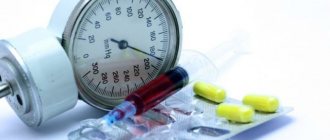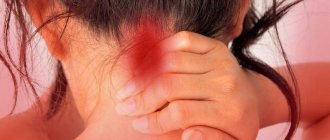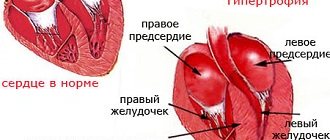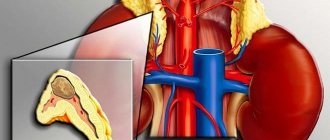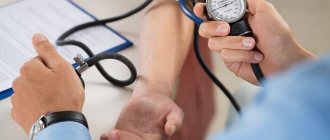When the pressure is 140 over 80 or 140 over 85 mmHg. Art. occurs only occasionally, for example, after experiencing stress or intense physical activity, and the rest of the time it remains at a normal level, there is no cause for concern. But if such indicators become commonplace, we can talk about the beginning of the development of systolic hypertension, the so-called borderline hypertension, which can and should be fought. The list of effective control methods includes the following: taking antihypertensive pills, folk recipes for stabilizing blood pressure, nutritional correction, timely treatment of concomitant diseases.
Symptoms of incipient hypertension
At this stage of the disease, the symptoms are often blurred and the person practically does not feel the manifestations of hypertension, learning about the problem during a routine examination with a doctor. But usually a pressure of 140 over 80 is accompanied by characteristic symptoms. This:
- often headaches in the back of the head or temples;
- sleep is disturbed;
- periodic heart pain occurs;
- the heartbeat becomes unstable, tachycardia (pulse 90–100 and above) or bradycardia (pulse below 60 beats per minute) develops;
- “floaters” appear before the eyes and noise in the ears;
- hypertension is characterized by shortness of breath with minimal physical exertion;
- An increase in upper blood pressure may be accompanied by nausea and vomiting.
If such symptoms appear, you should consult a doctor. He will be able to determine the cause of high blood pressure, the severity of the condition, and then prescribe the optimal treatment regimen, taking into account the characteristics of each patient.
Important! What pressure is normal for each patient is an individual question. You cannot follow the standard 120/80, since this norm is relevant only for young people whose medical history is not burdened by other disorders in the functioning of internal organs and systems.
Table of BP (blood pressure) by age
What does pressure 140 to 80 mmHg mean? Art.?
Oxygen and nutrients enter our body through blood, which circulates through the vessels, exerting a certain pressure on them. Blood pressure manifests itself as a result of the process of compression of the walls of blood vessels. The unit in which it is measured is millimeters of mercury.
There are upper (systolic) and lower (diastolic) blood pressure. The indicator of upper blood pressure depends on the force and speed of the heart pushing blood into the vascular system. Lower - minimum pressure during the pause between compressions.
Blood pressure indicators depend on factors such as:
- the volume of blood that circulates in our body;
- vascular resistance to blood flow;
- an indicator of the strength of heart contractions.
Blood pressure can depend on both a person’s gender and age. However, the norm for most people is 120/80. Although each person’s blood pressure may be individual, deviations from this indicator are considered a cause for concern.
If your blood pressure is 140 over 80, what does that mean? A reading of 140 indicates that the upper systolic blood pressure is elevated. In the case when the upper pressure is 140 and the lower 80 is normal, the initial development of arterial hypertension is possible.
What to do if your blood pressure is 140 over 80 and your pulse is 80? First, let's decide on the question of what heart rate is considered normal for a person.
Normal heart rate for:
- teenagers - 55–95;
- people under 50 years old - 60–80;
- elderly people over 50 years old - 70–90.
Thus, we see that the pulse rate is not exceeded and it is necessary to treat the manifestations of hypertension directly. Based on this, in the case when the pressure is 140 to 80, while the pulse is 80 beats per minute, there is no serious cause for concern, except for directly increased blood pressure.
Blood pressure 140 over 85 is this normal? An increase in lower blood pressure can normally range from 60 to 85 mm Hg. Art. If your reading is 85 occasionally during the day, there is no cause for concern. But in case of chronic manifestation of the maximum indicator of lower blood pressure, especially in combination with increased systolic blood pressure, it is necessary to consult a doctor.
Is it normal?
It is impossible to say that 140 over 80 is normal pressure. Because even this, albeit not a very significant increase in blood pressure, is a sign of the manifestation of stage 1 hypertension.
With such pressure, many people do not notice a deterioration in their health or the appearance of any signs of illness. However, despite this, if you do not see a doctor and do not start treating the developing disease in time, it can progress and seriously affect the internal organs of a person.
The main symptoms of hypertension are:
- heartache;
- dizziness;
- nausea;
- pain in the back of the head;
- pulsation in the veins;
- clouding of consciousness;
- fear and feeling of anxiety.
In men
According to statistics, men are more susceptible to cardiovascular diseases than women. Risk factors for the stronger half of humanity are: heredity, smoking, age, obesity. The causes of hypertension in men are:
- heavy physical exertion on the body;
- poor nutrition;
- uncontrolled use of drugs;
- frequent use of alcohol and tobacco;
- a permissive attitude towards your body.
What to do with a blood pressure of 140 to 80 in men? Treatment and prevention of various indicators of high blood pressure, including 140/80 in men, is as follows:
- reducing salt intake;
- marinades, spices, spicy;
- reducing alcohol consumption;
- quitting tobacco;
- reducing physical activity;
- reducing stress levels.
In a teenager
The modern rhythm of life and the state of the environment are such that many diseases that were previously characteristic of older people are beginning to appear among young people. Blood pressure norms for adolescents are approximately the same as for adults: 100–140 per 70–90 mmHg. Art., pulse 60–80 beats.
The reasons for pressure 140 to 80 in a teenager can be:
- excessive physical activity;
- hormonal changes;
- poor nutrition;
- obesity;
- stress and emotional stress;
- heredity.
During pregnancy
Pressure of 140 over 80 during pregnancy can be caused by the fact that when women carry a fetus, the amount of circulating blood increases. In this case, the vessels can hardly bear such loads, and internal discomfort occurs.
Features of treatment for pregnant women include the need to constantly be under medical supervision to avoid a decrease in heart rate. Such patients are limited in the use of medications. You should not take alcohol tinctures so as not to harm the fetus. Doctors usually advise pregnant patients to:
- eat the fruits of viburnum and lingonberries;
- drink teas with lemon balm and mint.
However, this recommendation will be useful to all people who detect a pressure of 140 to 80 on a tonometer. What are the reasons and what to do in this case?
Causes of high upper pressure
Adolescents often experience increased systolic blood pressure during the difficult period of puberty. High blood pressure is temporary and returns to normal over time without the help of medications. But if your child encountered a similar problem in adolescence, there is a high probability that by the age of 40 he will become a true hypertensive patient, so his health needs to be monitored especially carefully even after blood pressure has normalized.
The causes of increased upper pressure in elderly cardiologists (over 65 years of age) are associated with the development of atherosclerosis (clogging of blood vessels with cholesterol plaques) and subsequent calcification. In middle-aged men, the disorder is diagnosed due to poor nutrition, heavy physical labor, emotional overload, and bad habits.
Among the common causes of high upper blood pressure against the background of normal lower blood pressure are:
Blood pressure 140 over 90
- heredity;
- decreased vascular elasticity associated with age-related changes or cardiovascular diseases;
- poor diet, rich in salty and fatty foods;
- excess weight;
- physical inactivity;
- brain diseases;
- head injuries;
- decreased levels of magnesium and potassium in the blood;
- hormonal disorders, including in pregnant women;
- constant stress;
- menopause;
- chronic kidney disease;
- diseases of the endocrine system;
- poor ecology in the region of residence.
Adverse habits such as smoking and alcohol abuse have a detrimental effect on blood vessels.
What to do?
In total, there are three degrees of hypertension, and an indicator of 140 to 80 indicates the first degree. If the pressure is 140 over 80, what should I do?
You should only worry if it persists continuously for a long time. And by immediately contacting a doctor, you can prevent the disease from developing. If such indicators are not frequent, then there is no reason to worry, and you can get by with general independent measures to improve your health.
Don't rush to take medications, you can try first:
- to refuse from bad habits;
- start going for a massage;
- eliminate junk food;
- engage in light physical activity;
- give up coffee;
- go on a diet.
Doctors also recommend:
- drink medicinal herbs;
- drink cocktails containing oxygen;
- take hydrogen sulfide baths;
- sauna.
How to control the condition
If your blood pressure is constantly elevated or rises periodically, your condition must be monitored at home. A compact automatic or semi-automatic tonometer is best suited for these purposes. Despite the ease of use of these devices, it is necessary to adhere to a number of simple rules that allow you to obtain the most reliable results of measuring blood pressure in both hypertension and hypotension.
- Half an hour to an hour before the measurement, you should not smoke, play sports or other physical activities, drink caffeine-containing drinks, or eat salty, spicy, or fatty foods.
- You should take a comfortable position, sitting in a chair or on a chair with a comfortable back. The arm on which the cuff is being applied should be at heart level, for example, lying on a table.
- While the tonometer is operating, you should not make sudden movements, gesticulate, or talk.
- To obtain the most reliable data, pressure is measured on both hands with an interval of 10 minutes. Large indicators are taken as a basis. Subsequently, measurements can be taken only on the arm on which the blood pressure turned out to be higher.
- All values - systolic, diastolic pressure, heart rate (a pulse of 60–80 beats per minute is considered normal for an adult), measurement time - are recorded in a log, which should be shown to the doctor to make the correct diagnosis.
Important! The accuracy of the measurement depends on the correct choice of cuff. For an adult or teenager, the standard cuff included with the tonometer is suitable. For a child or a person with large hands, it is necessary to purchase an additional pad.
Blood pressure: normal, high or low
Blood pressure readings indicate the patient's health. It's nice when they are normal. Often measurements show deviations, both upward and downward. To understand the numbers when measuring pressure, you need to understand the basic terms:
- Systolic or upper pressure is formed at the moment when blood is pushed out of the heart.
- Diastolic or lower is calculated during the pause between heartbeats.
- The pulse is determined by the difference between two values: upper and lower (or systolic and diastolic).
- Blood pressure is measured in special units – millimeters of mercury. When measuring pressure, two values are indicated through a fraction: upper and lower.
Treatment methods
If you are diagnosed with arterial hypertension, it means that you will have to take full responsibility for your own health. It is impossible to achieve positive dynamics of treatment by washing down antihypertensive pills with beer and eating fried potatoes.
As long as upper pressure readings are at 140–142–144 mm Hg, there is a high probability that the problem can be solved without the use of potent tablets. First of all, it is necessary to eliminate the factors that contribute to the development of the disease and increase the upper pressure.
The recommendations are as follows:
- Quit smoking and alcohol completely. An exception is dry red wine, which increases the elasticity of blood vessels.
- Play sports to prevent complications of physical inactivity, including heart attack, stroke, and heart failure. Physical activity in the fresh air is especially useful, for example, morning jogging and leisurely walks before bed.
- Lose excess weight, which has a detrimental effect on the condition of the entire body as a whole.
- Adjust your diet in favor of foods that are healthy for your blood vessels, replace animal fats with vegetable fats, buy a double boiler to cook not only healthy, but also tasty dishes.
- Do not forget to be regularly examined and promptly treat diseases that can cause the development of arterial hypertension.
Important! You need to know how to reduce high blood pressure in an emergency. The tablets are selected individually by the doctor. With a sharp jump in blood pressure, they can not only improve your well-being, but save your life.
Non-drug methods will help to level blood pressure boundaries:
- sauna (with mandatory heart rate monitoring);
- medicinal baths (radon, hydrogen sulfide);
- UHF therapy;
- electrophoresis;
- massage;
- electrosleep.
Herbal infusions that have a diuretic and sedative effect are highly effective. If hypertension progresses, then it is no longer possible to do without daily medication. Among the most popular groups of drugs are ACE inhibitors, calcium antagonists, diuretics, alpha blockers, beta blockers.
The drug treatment regimen should take into account that lower pressure is normal and there is no need to reduce it. Therefore, it is strongly not recommended to choose a drug for yourself, focusing on advertising calls and reviews of friends.
Which number is more important?
Typically, more attention is paid to systolic blood pressure (the first number) as the main risk factor for cardiovascular disease for people over 50 years of age. For most people, systolic blood pressure rises steadily with age due to the loss of elasticity of the large arteries, an increase in heart rate, and the development of vascular disease.
However, an elevated systolic or elevated diastolic blood pressure value can be used to diagnose high blood pressure. The risk of death from coronary heart disease and stroke doubles with a 20 mmHg increase in systolic blood pressure. Art. or diastolic by 10 mm Hg. Art. among people aged 40 to 89 years.
Forecast
Blood pressure of 140/80 rarely causes fatal complications. The prognosis with the correct patient management tactics is favorable. However, as a result of even the smallest error, the following can spontaneously develop:
- hypertensive crisis;
- ONMK;
- AMI;
- hemophthalmos;
- surge arrester;
- nephropathy;
- pulmonary edema, shortness of breath, asphyxia;
- internal bleeding.
To prevent such a situation, it is necessary to consider such pressure in a comprehensive manner with mandatory consultation with a doctor.
How to treat high blood pressure
An increase in blood pressure cannot always be noticed without using a tonometer. Often the symptoms are similar to general fatigue and overwork. In the absence of help, the disease gradually gains unpleasant momentum.
As an emergency treatment, drugs that have an immediate effect are used.
The drugs are available in different dosages, so a doctor’s advice is required so as not to harm the body, but to prevent the development of a stroke. To obtain a hypotensive effect, the tablet is placed under the patient’s tongue and gradually dissolves.
If you have hypertension, you will have to constantly take medications to keep your blood pressure normal. Their effect is usually limited to a day. To obtain a cumulative effect, hypertensive patients are advised to take prescribed medications at one time of day.
To control the disease, complex therapy is sometimes prescribed. Antihypertensive, diuretic, and cardiac medications are used. If there is no desired effect, the medications must be changed after 2 weeks.
No drug is used without a doctor's prescription. The treatment regimen is selected individually.
Only a doctor determines the need to use diuretics, beta and alpha blockers.
What to do at home
All emergency antihypertensive drugs have the ability to sharply reduce blood pressure, so drinking them without a doctor’s prescription is contraindicated. Dosage is very important. At home, it is customary to relieve hypertension with safe manipulations:
- calling an ambulance;
- horizontal position;
- access to fresh air;
- loosening tight clothing;
- continuous tonometry;
- taking sedative drops (Corvalol, Valerian).
No initiative, any mistake can lead to irreparable consequences.
Features of treatment
If blood pressure 140/80 is a symptom of confirmed hypertension, then the basis of therapy is to eliminate the root cause; in addition, medications and folk remedies are used.
Medicines
Normalization of the work of internal organs is carried out:
- ACE inhibitors (Losartan);
- diuretics of different groups, but always under the supervision of a doctor (Lasix, Veroshpiron);
- calcium antagonists (Norvasc);
- adrenergic blockers (Betalok);
- herbal-based sedatives (Fitosedan).
Emergency assistance is provided by Kapoten. Terry atherosclerosis requires surgical intervention for angioplasty.
Folk remedies
These are medicinal herbs, fruits, berries that lower SBP:
- mint;
- Melissa;
- motherwort;
- geranium;
- cowberry;
- hawthorn;
- rose hip;
- viburnum;
- carnation.
They are drunk in the form of decoctions, infusions, tinctures, and ready-made teas from the pharmacy.



